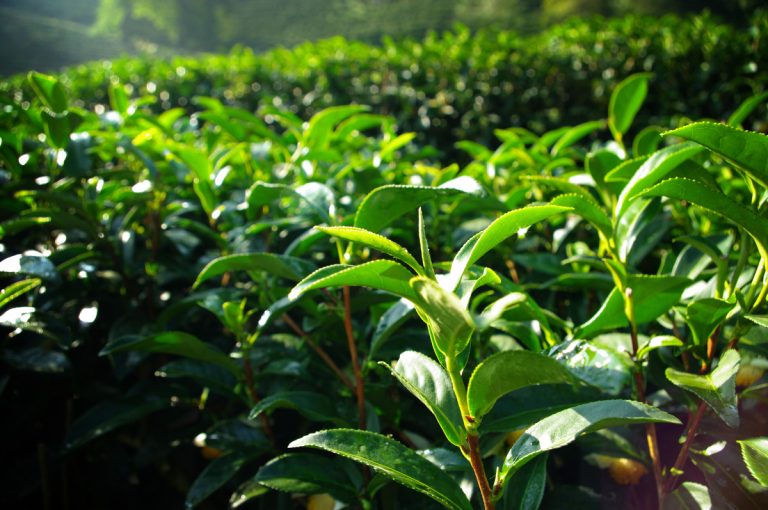Much of the tea we drink comes from a specific plant called Camellia sinensis.
Also known as the tea plant, only infusions of this specific plant are considered to be true tea.
This article is intended as a guide on how to grow the tea plant.
Table of Contents
General Features
Although the tea tree is native to China, it was taken to India a long time ago and is widely grown there as well.
You can grow it either planted in the ground or a pot. The harvest of Camellia sinensis leaves provides the base plant for the more traditional teas we drink every day, such as black tea, oolong tea, green tea, and white tea.
The plant can reach 15m in height, however, it is common that when cultivated through pruning it remains around 1.5m; but in this case, it rarely blooms. It has dark and glossy leaves, with well-marked veins on the surfaces, with entirely serrated margins, and the younger leaves are covered with small white trichomes.
The flowers appear singly or in pairs in the leaf axils. They are small, with white and fragrant petals, they have many stamens and a pistil with stigmas. The fruits are small capsules with seeds, from which edible oil can be produced.
There are several varieties of this plant, with C. sinensis var. assamica being the largest and one of the most commonly grown strains for tea production. This cultivar is known to produce tea with large concentrations of caffeine. In addition to being rich in magnesium, potassium, folic acid, and vitamins C, K, B1, and B2, the leaves contain compounds such as catechins, bioflavonoids, and tannins.
Different types of tea are produced from the leaves of Camellia sinensis. This plant gives rise to several different types of tea, but they can generally be divided into four categories: White tea, green tea, oolong tea, and black tea.
Cultivation
Tea plant seedling adapts to different conditions, from tropical and subtropical climates to hot and humid areas. The best results are obtained in places with temperatures between 20-30°C, and above or below these values the plant growth is retarded.
Depending on the cultivar, the sensitivity to temperatures is markedly different. Generally, the minimum temperature is -3 to -15 °C. However, early cultivars can be extremely sensitive to frost.
It needs fertile, acidic, well-watered soil, in full sun or filtered sunlight. Requires moderate heat. This seedling also likes well-drained soil.
If planted in a pot, choose a pot or planter that has holes at the bottom for good water drainage. Create a bed of gravel or sand in the pot to create a drainage system. It likes animal manure, tanned manure, or bone meal mixed in the soil or the pot. Water 3x a week when hot/dry and 2x a week when cold/wet.
Pruning should be done just for training and control to keep the tree lower.
Harvest
After being planted, the tree takes between 3 and 5 years to give its first harvest, with the peak of its production and quality of the leaves showing once it reaches at least 20 years of age.
In winter the plant “hibernates”, starting to give its buds at the beginning of spring or autumn. However, during other periods of the year, it is also sometimes harvested for other types of use.
This harvesting process is a determining factor in the quality of the tea that arrives at your table: to obtain the most pronounced flavor and characteristic aroma in the tea, the plant must be harvested when the bud is at the beginning of the cycle, with only two leaves.

